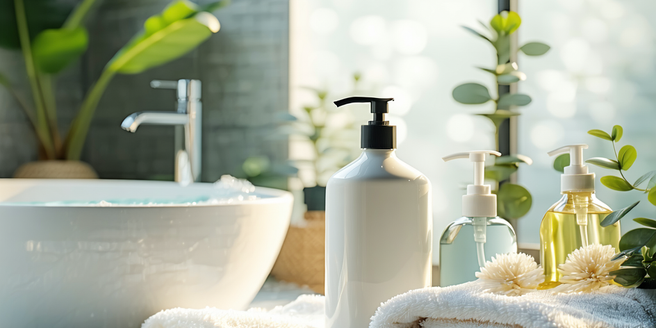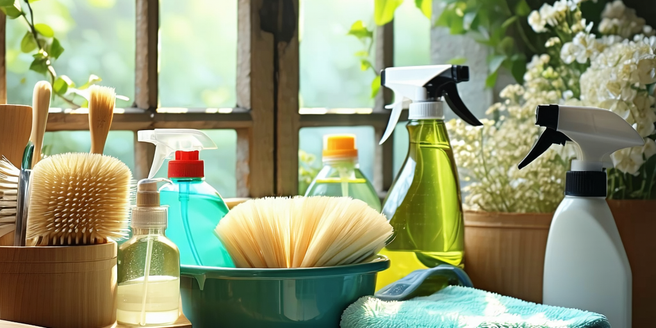
Understanding the Urgency for Green Cleaning
| Environmental Effects | Health Impact | Eco-alternatives |
| Chemical pollutants | Skin irritations | Vinegar solutions |
| Waste accumulation | Respiratory issues | Baking soda |
| Water contamination | Toxic exposure | Lemon juice |
| Loss of biodiversity | Allergies | Castile soap |
| Ozone depletion | Hormonal changes | Essential oils |
| Ecological imbalance | Headaches | Hydrogen peroxide |
Benefits of Using Natural Cleaning Products
Switching to natural cleaning products offers numerous benefits that go beyond simply having a cleaner environment. Firstly, these products are often biodegradable, meaning they break down easily and won’t linger in our ecosystems. This reduces pollution and protects wildlife. Secondly, natural cleaning solutions are typically less harmful to human health. They’re made from ingredients that are not associated with the harmful side effects sometimes linked to traditional cleaners, such as skin irritations or respiratory problems. Furthermore, by choosing eco-friendly methods, you’re also supporting a wider market of green businesses over those who persist in producing goods that harm the earth and its inhabitants. These choices contribute to a more sustainable world. Ultimately, incorporating natural cleaning products into your routine promotes well-being for both your family and the planet.
Common Household Ingredients for Eco-cleaning
Many might be surprised to learn that their own kitchens and cupboards house a variety of eco-cleaning ingredients. One hero ingredient is white vinegar; its acidity helps to kill bacteria and dissolve mineral deposits. Combining vinegar with baking soda can create a fizzing action that lifts dirt and grime from surfaces, making this duo perfect for tackling various cleaning tasks. Another common ingredient is lemon juice, which contains natural antibacterial properties and a fresh scent that revitalizes spaces. Finally, baking soda is another staple, acting as a mild abrasive to scrub away tough stains without damaging your surfaces. These ingredients are readily available, affordable, and efficient. Adopting these simple materials into your cleaning routine can make a significant difference in reducing environmental harm without compromising cleanliness.
DIY Recipes for All-purpose Cleaners
Crafting your own all-purpose cleaner is not only satisfying but also surprisingly simple. One popular recipe includes mixing two cups of water with 1/2 cup of white vinegar, and 15 drops of essential oil, such as lavender or tea tree, for additional antibacterial properties and pleasant fragrance. Add this solution to a spray bottle and shake well before use. For those who prefer a more potent mixture, add two tablespoons of Castile soap for extra cleaning power. This versatile cleaner can be used on countertops, floors, and other hard surfaces, and it’s gentle enough to use around children and pets. By using such homemade cleaners, you limit your exposure to the harsh chemicals often found in store-bought products and contribute positively to a greener home environment.
Safe Alternatives to Chemical Disinfectants
When choosing disinfectants, it’s important to find alternatives that do not compromise safety and cleanliness. Natural options like hydrogen peroxide and isopropyl alcohol (at concentrations above 70%) can effectively kill germs without introducing harmful chemicals into your home. It’s essential to ensure the alcohol is used in well-ventilated areas to prevent inhalation of vapors. Hydrogen peroxide is especially advantageous because it breaks down into water and oxygen, leaving no toxic residue. Another option is the use of tea tree and eucalyptus oils, which possess natural antimicrobial properties, making them excellent natural disinfectants. These can be added to DIY cleaning solutions for an extra germ-killing boost. Adopting these safe alternatives promotes a cleaner home while ensuring long-term health benefits for your family and maintaining environmental integrity.
Eco-friendly Solutions for Stain Removal
Stains can be stubborn, but with the right eco-friendly solutions, they can be easily managed without resorting to harmful chemicals. An effective method for stain removal is a paste made from baking soda and water; apply it to the stained area and let it sit for a few minutes before scrubbing gently. For tougher stains, try adding lemon juice to the baking soda paste for enhanced stain-fighting power. For fabric stains, vinegar works wonders — dilute one part water with one part vinegar for a quick pre-wash soak that helps lift stains before laundering. Lastly, corn starch can absorb grease stains; simply sprinkle it on and let it sit before brushing it away. These solutions are not only effective but also safe for your family and the planet, allowing you to maintain a clean home responsibly.
Reusable Cleaning Tools for a Greener Home
Transitioning to reusable cleaning tools is another impactful way to green your home. Rather than relying on single-use items, consider investing in microfiber cloths and washable mop heads, which can be reused time and again, reducing waste and saving money over time. Microfiber is particularly effective at trapping dust and dirt without the need for additional cleaning agents. Additionally, instead of disposable paper towels, opt for cloth rags made from repurposed fabrics, which can be washed and reused, adding a sustainable element to your cleaning routine. For scrubbing, natural fiber brushes are a durable and biodegradable alternative to synthetic sponges. By making these small changes, you’re actively participating in the effort to reduce household waste while maintaining cleanliness.
How to Dispose of Non-green Cleaners Responsibly
Disposing of non-green cleaners in an environmentally responsible way can mitigate any negative impacts they may have. Firstly, check if your community has a hazardous waste collection program, as these often accept household cleaners that shouldn’t be poured down the drain. If possible, consider repurposing or donating any unopened products to shelters or community centers. It’s crucial to avoid mixing different cleaning agents when disposing of them, as this could result in harmful reactions. Ensure that any containers you wish to recycle have been thoroughly cleaned and dried. By taking the right steps, you ensure that the disposal of household cleaners does not contribute to environmental pollution, paving the way for an eco-conscious lifestyle.
Selecting Certified Eco-friendly Products
When shopping for cleaning products, look for certifications that indicate eco-friendliness and safety. Labels like Green Seal, EcoLogo, and Safer Choice are signs that a product meets strict environmental and health criteria. These organizations assess factors such as reduced toxicity, biodegradability, and packaging sustainability, providing assurance that the product aligns with ecological standards. Reading product labels and understanding ingredient lists help make informed choices. It’s important to be discerning, as some companies may use greenwashing tactics — misleading claims that products are eco-friendly when they’re not. Purchasing certified products not only contributes to a healthier home environment but also supports companies committed to sustainability and fosters a cleaner world for future generations.
Creating an Eco-cleaning Routine for Your Family
Establishing an eco-cleaning routine begins with education and a commitment to making mindful changes. Start by evaluating your current cleaning tools and products, identifying areas where sustainable swaps can be made. Involve family members in the transition process so everyone is on board; children can participate by learning age-appropriate tasks using non-toxic agents. Consider setting up a reward system to encourage consistency and enthusiasm. Set a regular schedule for tasks like mopping with reusable cloth mop heads and using eco-friendly sprays. Emphasize the long-term benefits of these practices, such as improved health and environmental conservation. Maintaining an eco-cleaning routine fosters responsibility and a sustainable mindset, ensuring a cleaner and healthier home for your family and future generations.

